The starting point for our recent river cruise was Budapest, the capital city of Hungary. Budapest is situated on the Danube River, which originates in the Black Forest of Germany. The Danube then flows southeast for 1,914 km (1,189 mi), passing through five capital cities before emptying into the Black Sea via the Danube Delta in Romania and Ukraine. This great river is host to many river cruise lines due to the beauty of the surrounding countryside and the many beautiful cities available to the traveler. Budapest is but one of many, and as I mentioned, the beginning our cruise adventure.
Budapest is the capital and the largest city of Hungary and one of the largest cities in the European Union. In 2011, according to the census, Budapest had 1.74 million inhabitants. The Budapest metropolitan area is home to 3.3 million people. The city covers an area of 525 square kilometres (202.7 sq mi). Budapest became a single city occupying both banks of the river Danube with the unification of Buda and Obuda on the west bank, with Pest on the east bank on 17 November 1873.
Cited as one of the most beautiful cities in Europe. Budapest contains an extensive World Heritage Site, no doubt contributing to its popularity with tourists. The city attracts about 4.4 million tourists a year, making it the 25th most popular city in the world, and the 6th in Europe.
The duration of our tour didn’t really give us the opportunity to appreciate all its attractions. We did get a good overview, which is what a river cruise is really designed to provide. I did get some good pictures but I left with the understanding there was much more there to be photographed. I’ll share today some of my favourites from our visit.
I begin with a panoramic view of the city taken from the Citadella area on the Buda side of the river. That’s Buda on the left, Pest on the right. The view is westward, the direction of our cruise up the river to Germany. You can see two notable bridges, the Chain Bridge in the foreground, with the Margit Hid Bridge further up river.
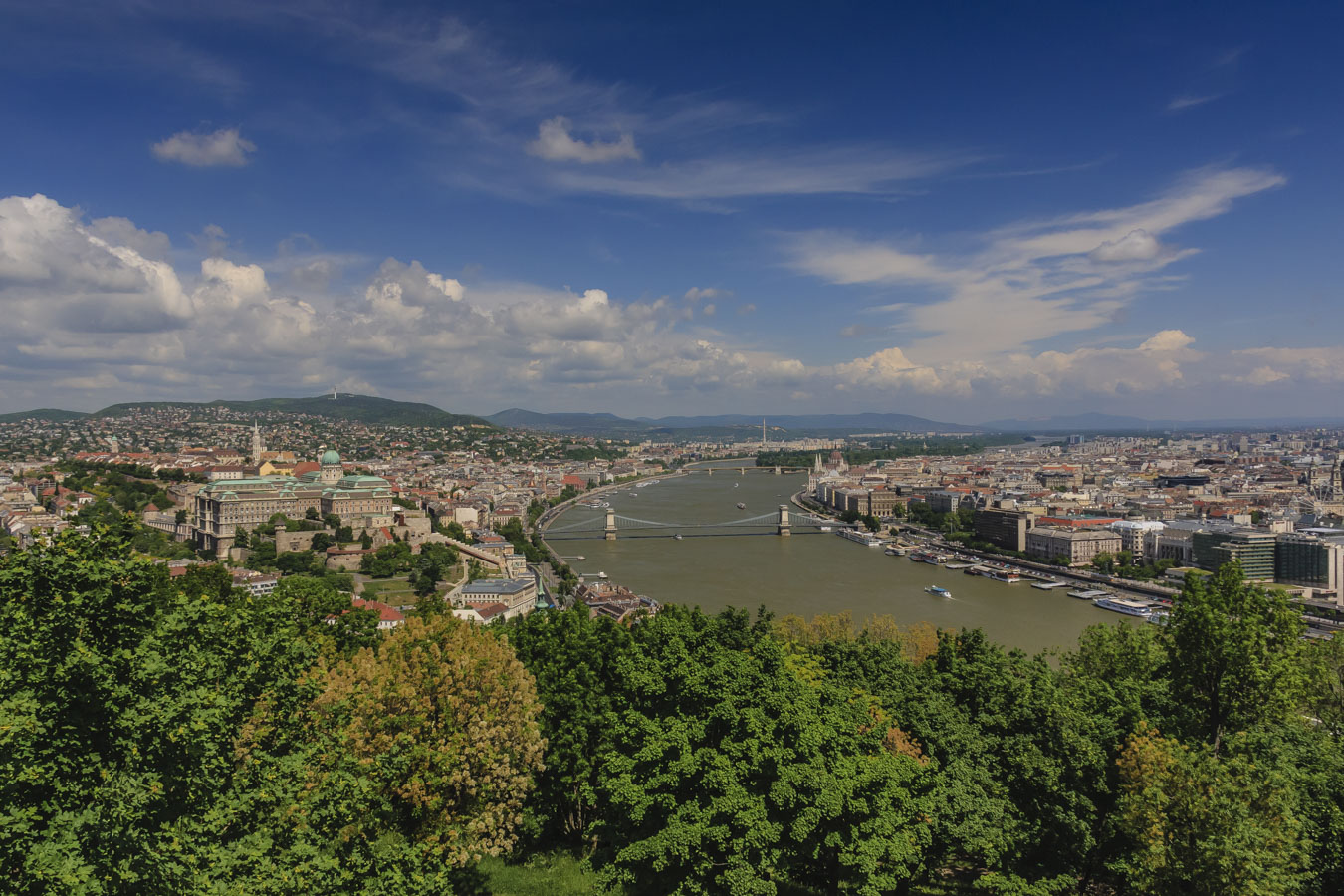
I got a few pictures of these scenic bridges of Budapest but I think my favourite are two that were taken in the first evening on board our ship, when we cruised down river to a berth closer to the city centre from where we first embarked. It was a magic trip, seeing the city lights and many of the prominent sights from the water. First, the Chain Bridge. Designed by the English engineer William Tierney Clark, it was the first permanent bridge across the Danube in Hungary, and was opened in 1849. The bridge bears the name of Istvan Szechenyi, a major supporter of its construction, but is most commonly known as the Chain Bridge. In my opinion, it’s Budapest’s most beautiful bridge, spectacular architecture.
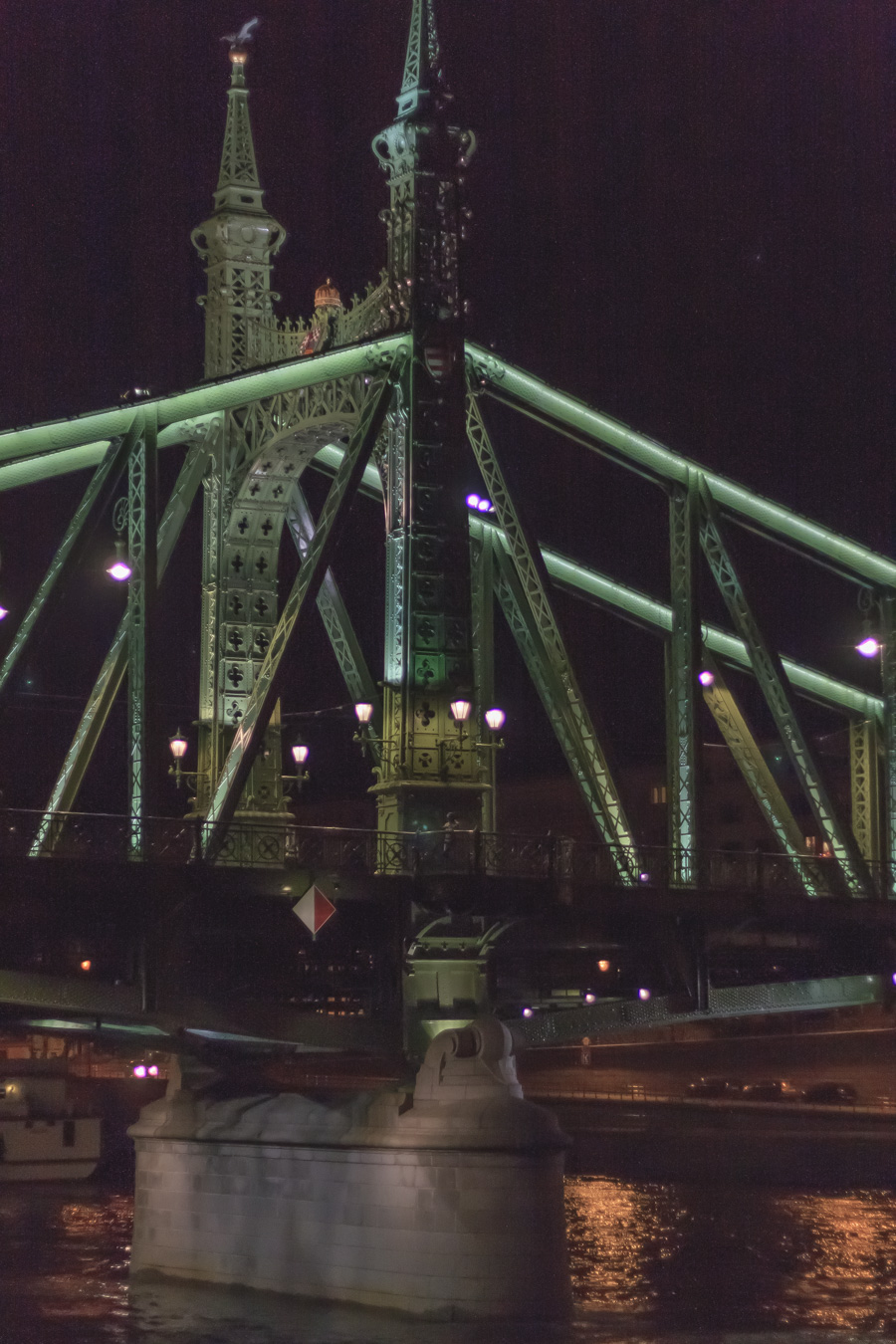
Elisabet Bridge is the third newest bridge of Budapest. The bridge is situated at the narrowest part of the Danube in the Budapest area, spanning only 290 m. It is named after Elisabet of Bavaria, a popular queen and empress of Austria-Hungary, who was assassinated in 1898. (Couldn’t have been that popular!) Today, her large bronze statue sits by the bridge’s Buda side connection in the middle of a small garden.
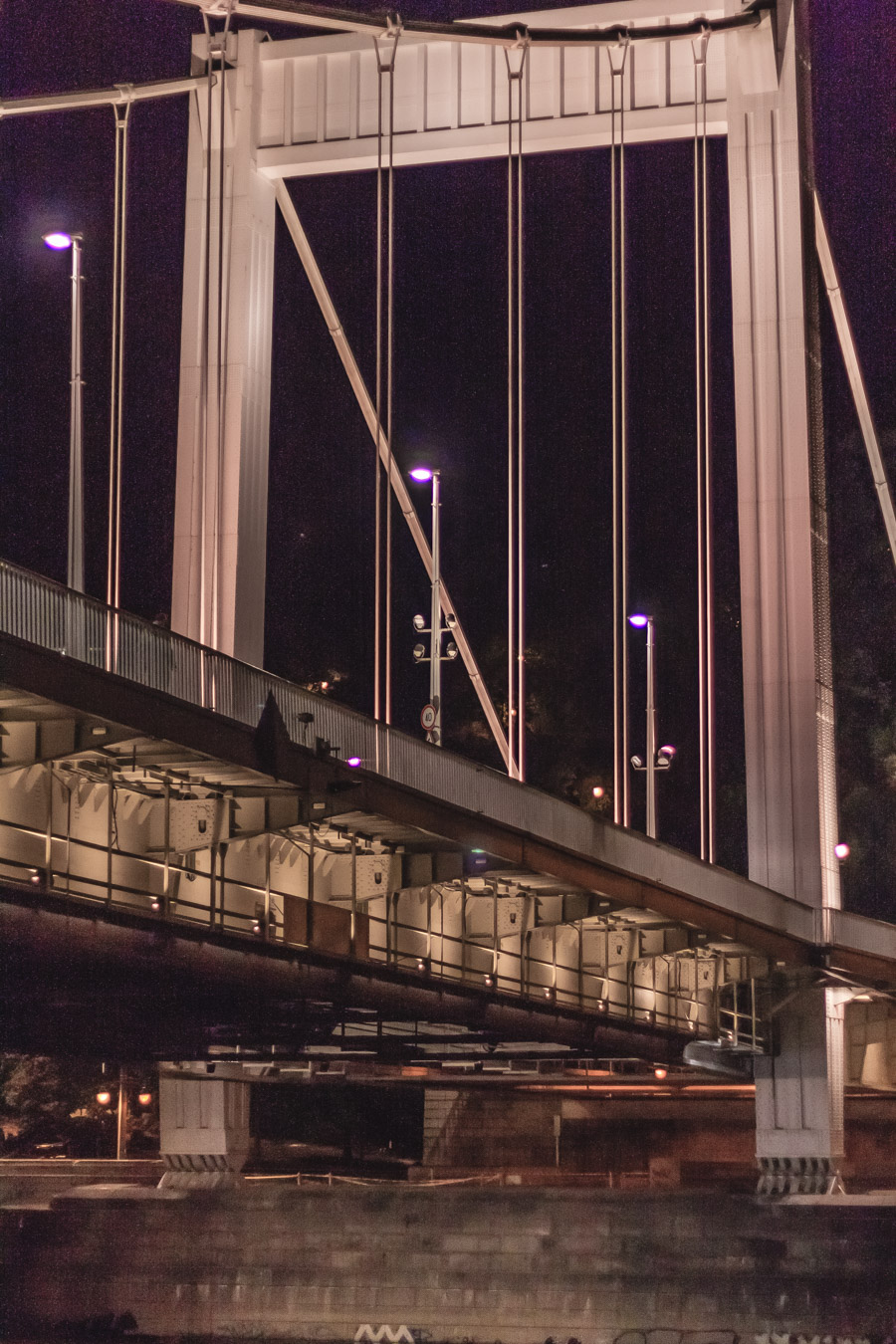
Here’s a shot I got of a streetcar, coming off the Buda side of the Chain Bridge.
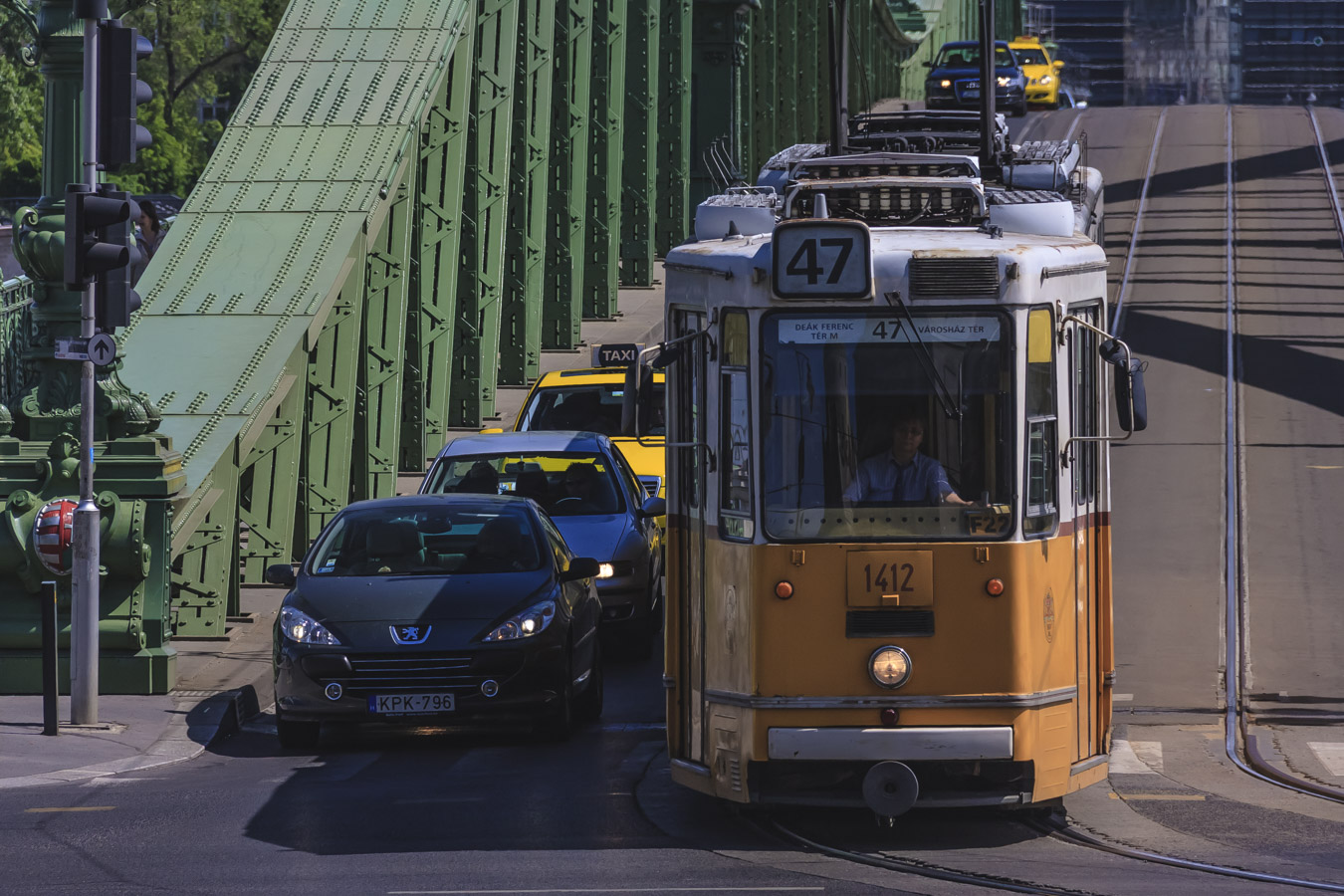
We arrived in Budapest the day prior to boarding the ship for our cruise. We spent the night at a highly rated local hotel. Imagine our chagrin when we first saw our rooms.
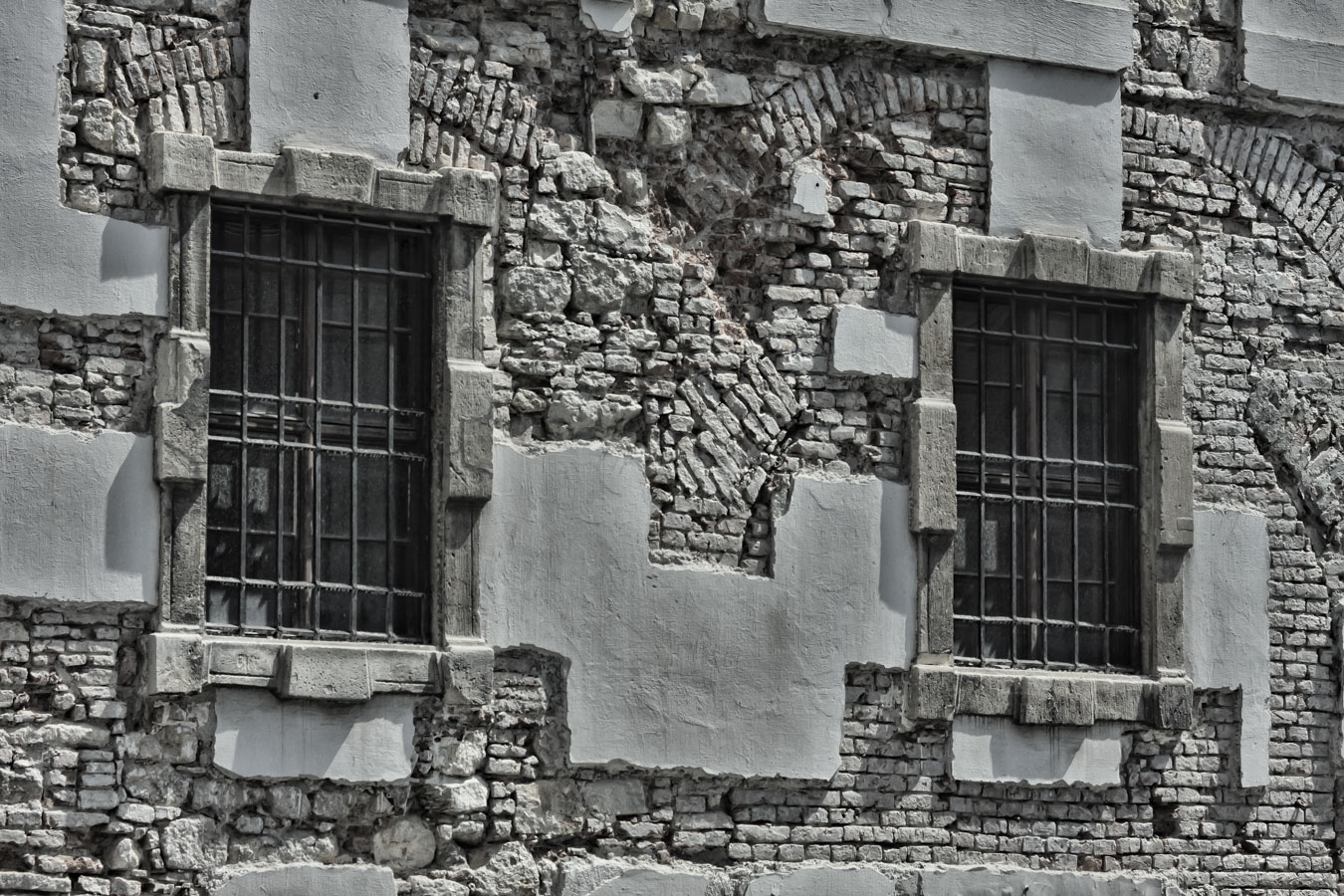
First impressions can be misleading. As it turned out, it wasn’t so bad. The inside was much more appealing, as evidenced by this beautiful staircase, descending from the mezzanine level to the main lobby.
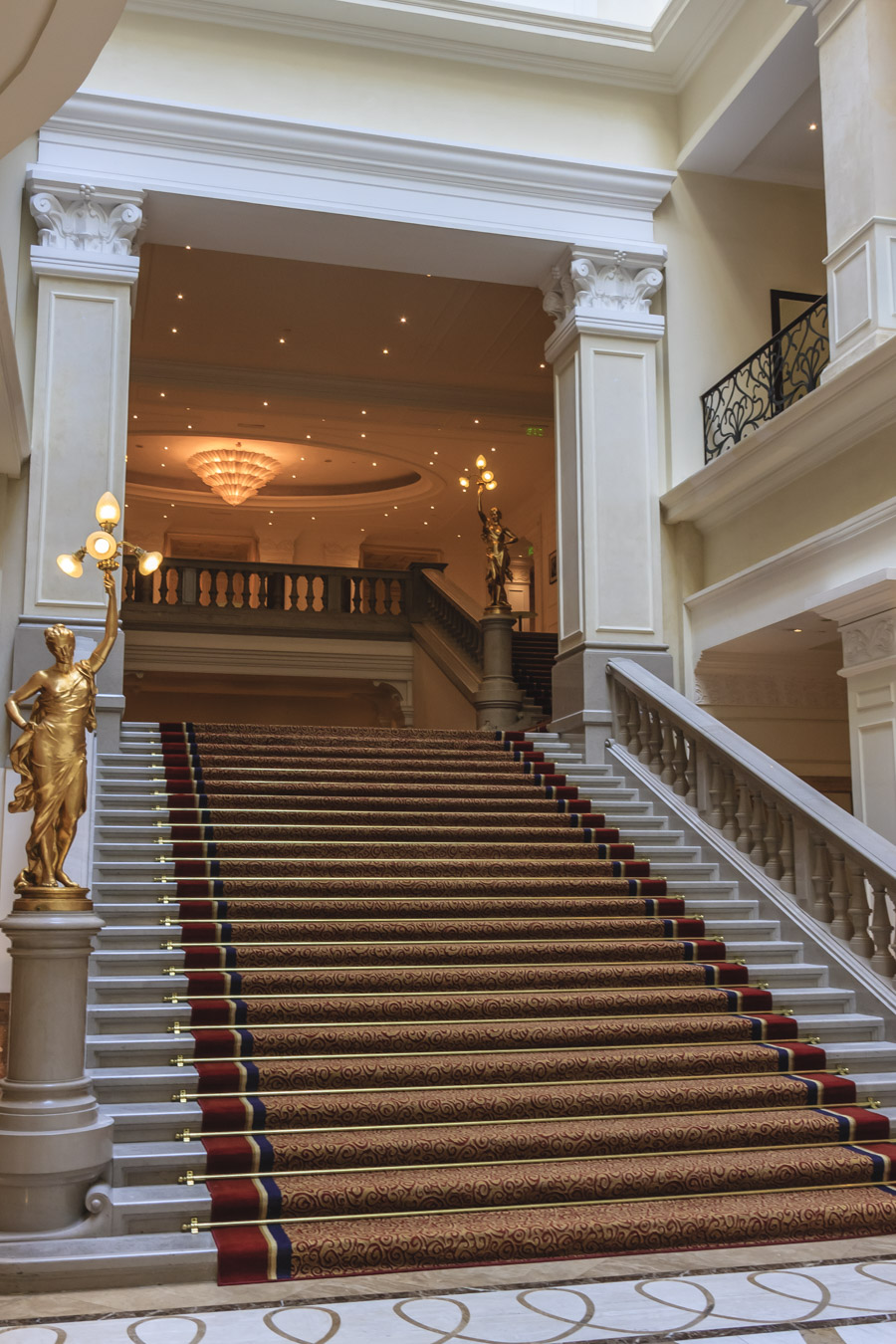
One of the more interesting attractions we visited was the Hungarian Parliament. The Parliament building is truly spectacular, one of the most impressive we saw on our entire tour. As the millennial celebrations of 1896 approached, the nation’s demand for representation channelled the conception of a unique Parliament building. The Palace of Westminster in part inspired the design, but a well-known Hungarian architect, Imre Steindl, laid out the plans in their entirety. The building stretches 268 meters in its length, along the Danube embankment.
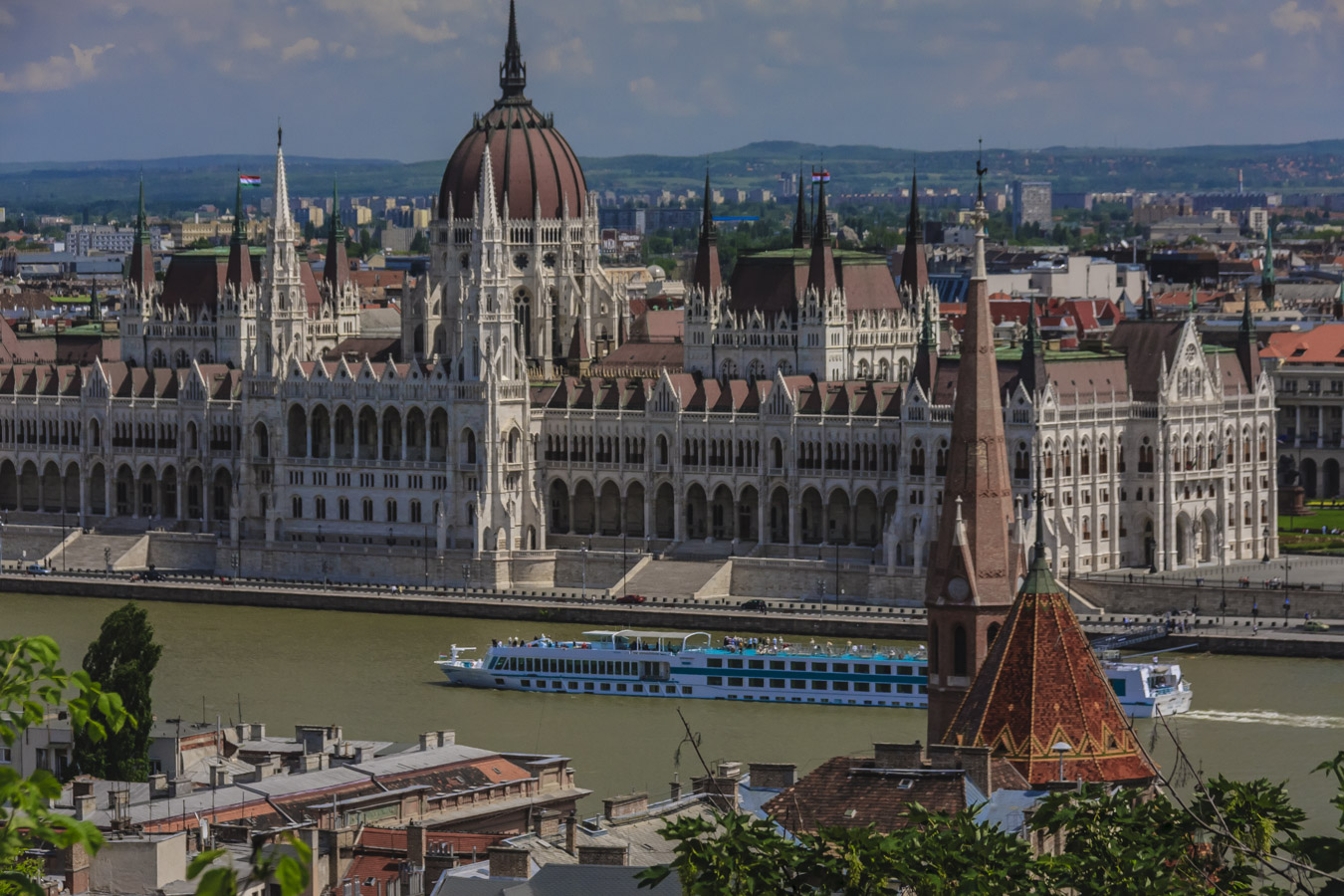
One more time, in black and white.
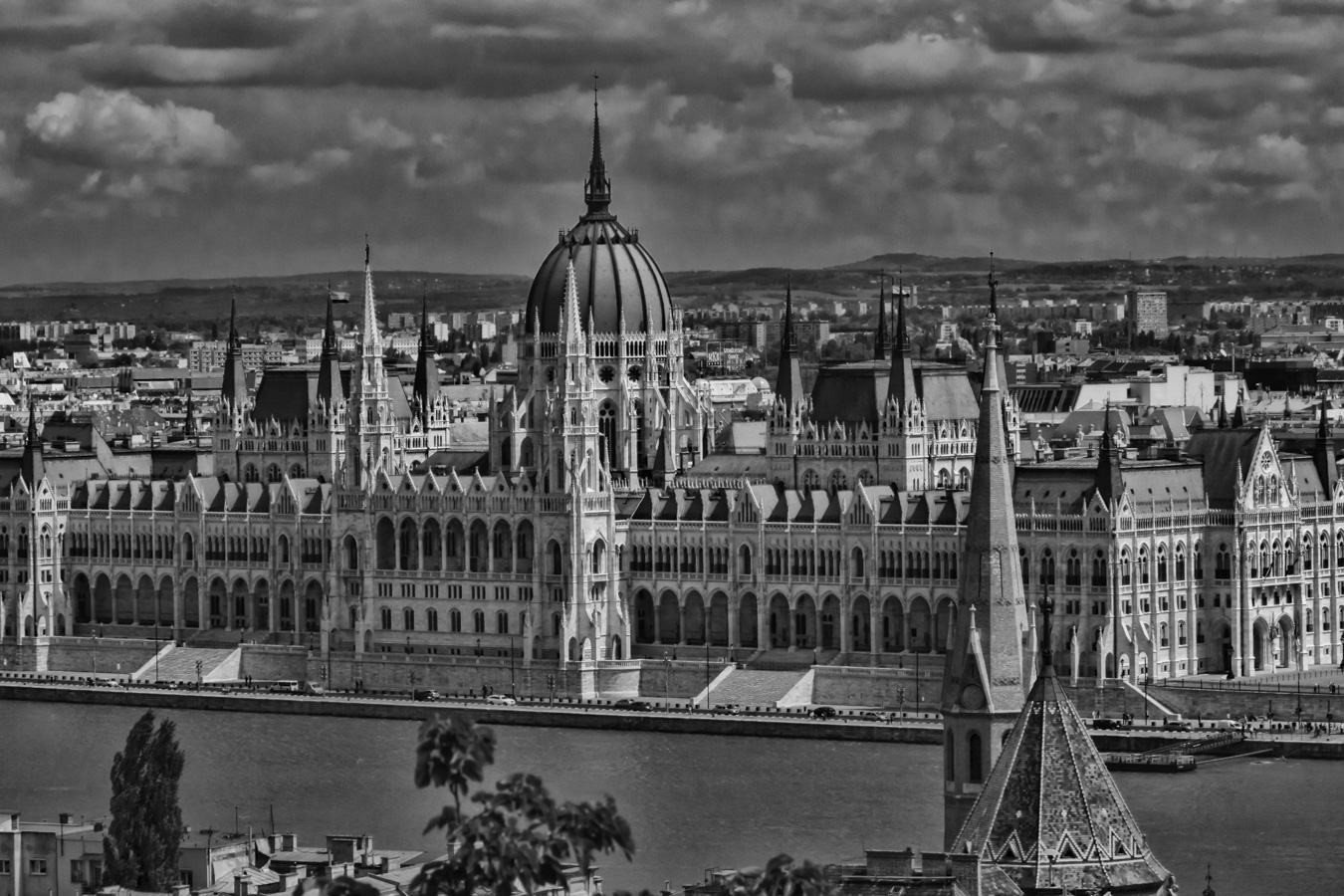
The exterior is magnificent but I was equally impressed by the beauty and grandeur of the interior. This photograph displays the main foyer; I have many more, but you get the idea.
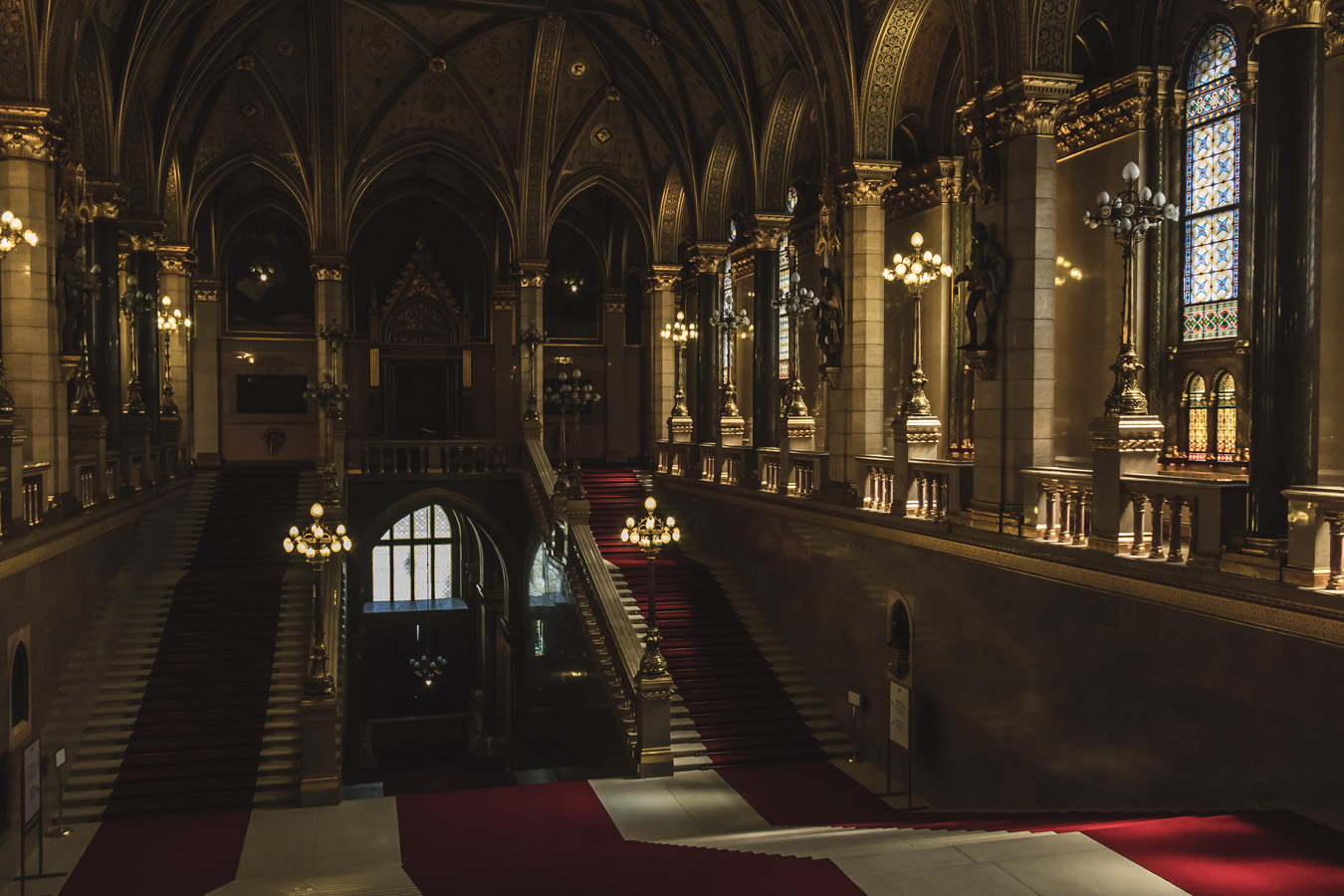
The last area of Budapest I’ll show you today is the Buda’s Castle District, overlooking the Danube on the Buda side. My first two pictures feature the Fisherman’s Bastion area. Fisherman’s Bastion is a terrace, designed and built between 1895 and 1902. The seven towers and the terrace offer a panoramic view of the Danube, Margaret Island, Pest and the Gellert Hill. Its seven towers represent the seven Magyar tribes that settled in the Carpathian Basin in 896. The Bastion takes its name from the guild of fishermen that was responsible for defending this stretch of the city walls in the Middle Ages.
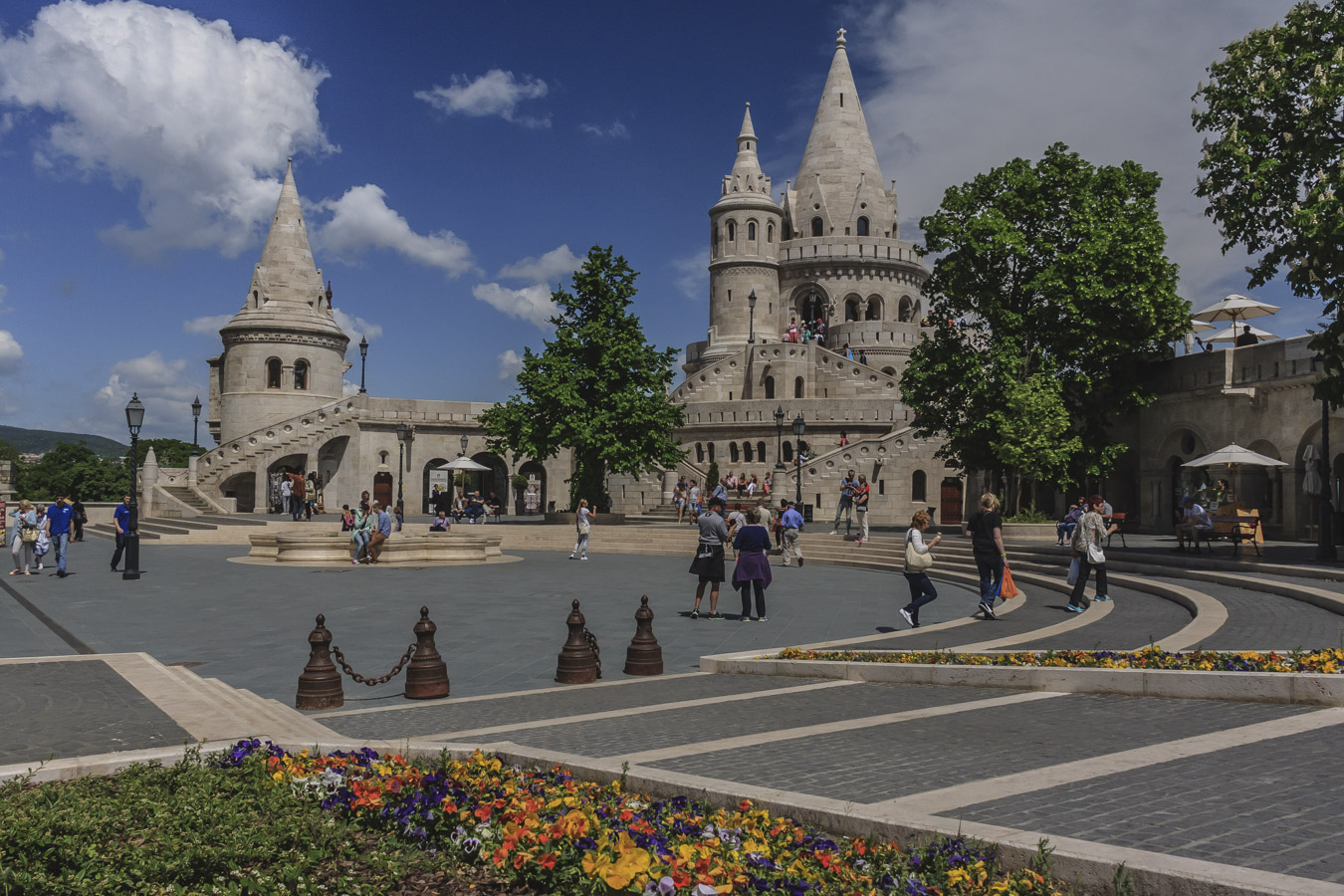
The following picture shows one of the towers and a glimpse of the Danube and Pest on its opposite side.
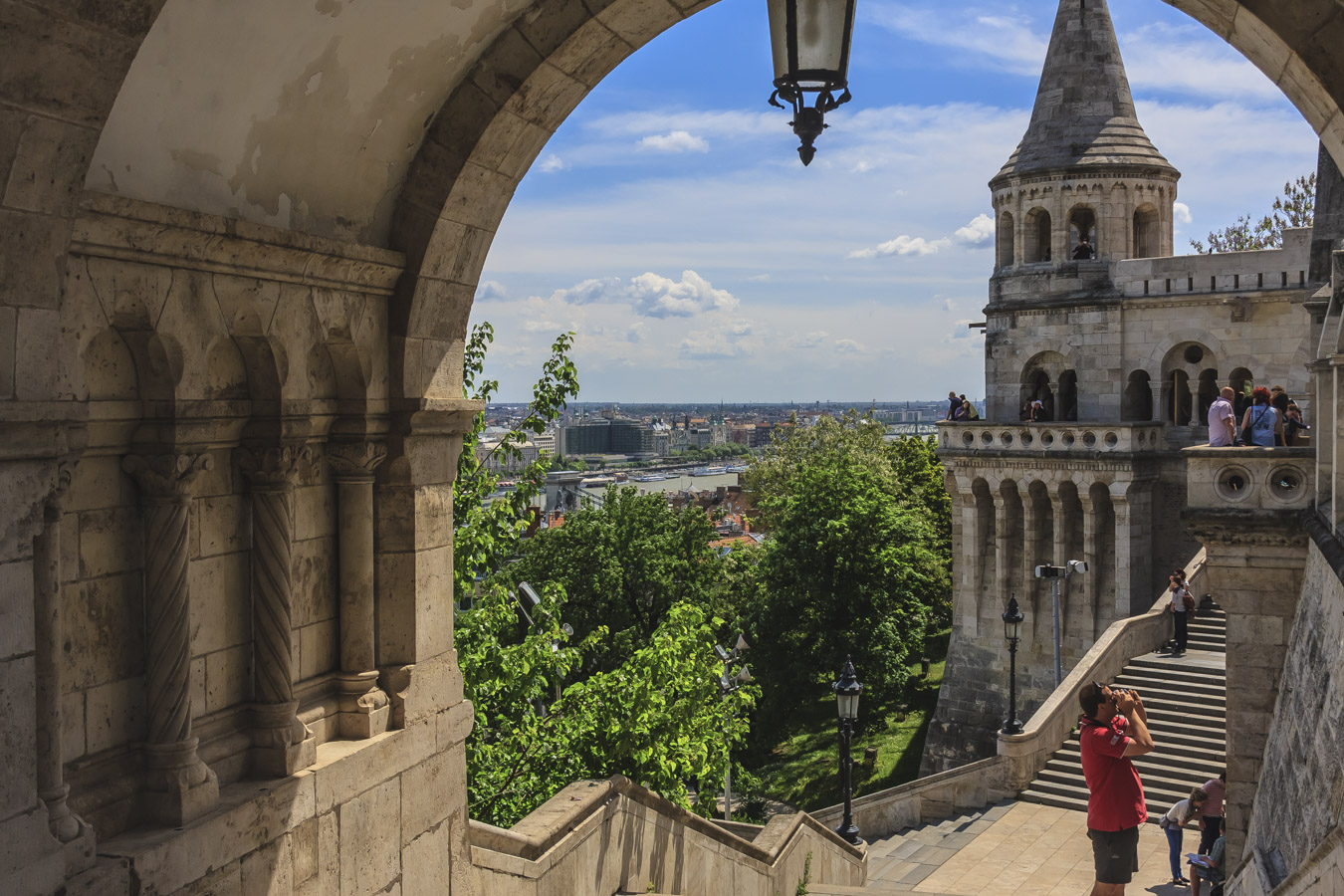
My next photograph introduced me to a recurring problem that I encountered throughout our travels: trying to capture a huge cathedral in a single photographic frame. If I got too close, I couldn’t capture all of it and sometimes not much of it. Backing up was often not a solution either, because that would introduce too many distractions in the foreground. I had pretty good success with this one, St. Mattias Church with only a few, fellow tourists in the foreground.
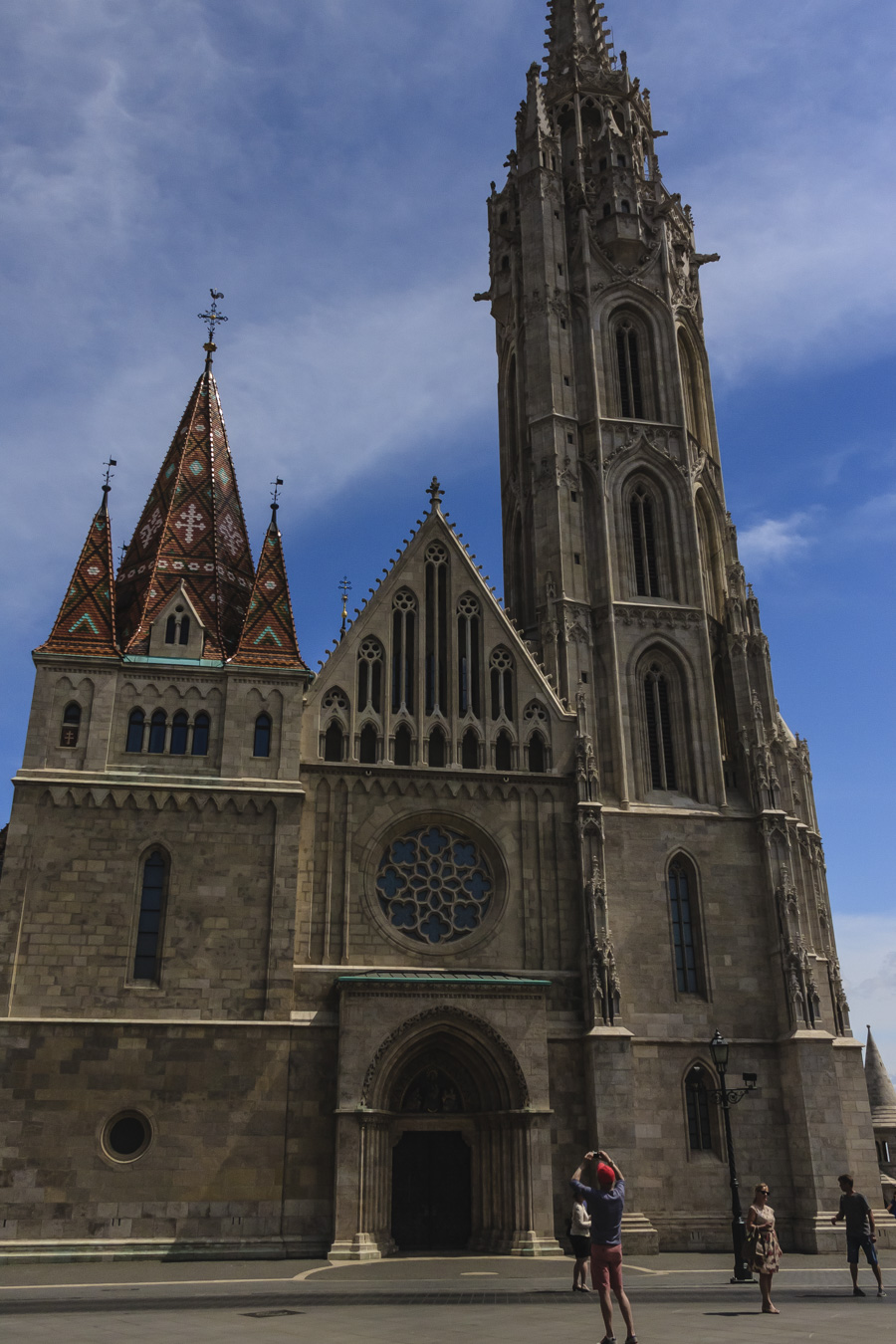
This final image shows the technique I adopted to get around the problem of size and distractions. I gave up the grand, all-encompassing image for close-ups of interesting aspects of the architecture. Here’s one from St. Mattias.
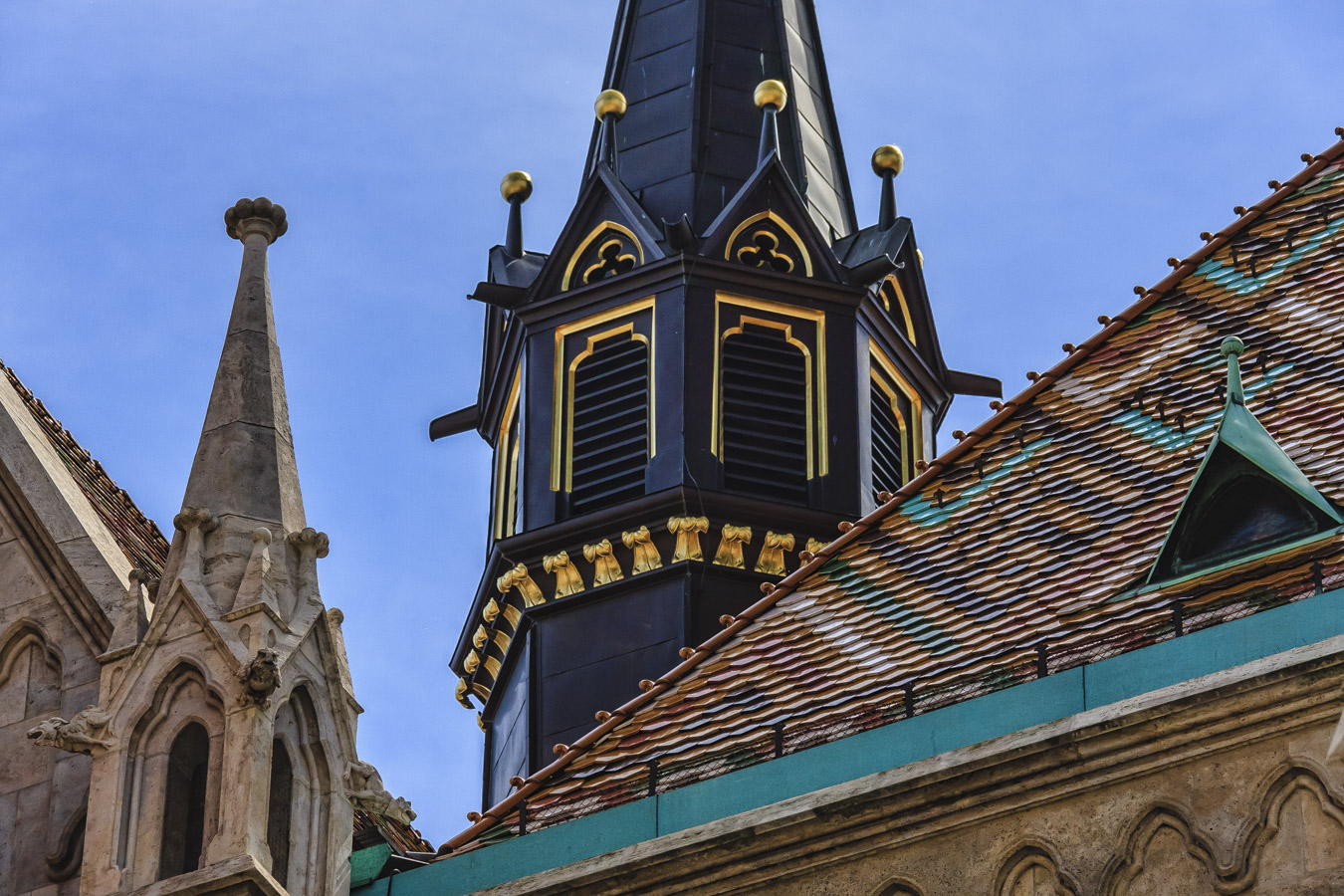
Budapest was great. Recommend it highly. On to Bratislava!

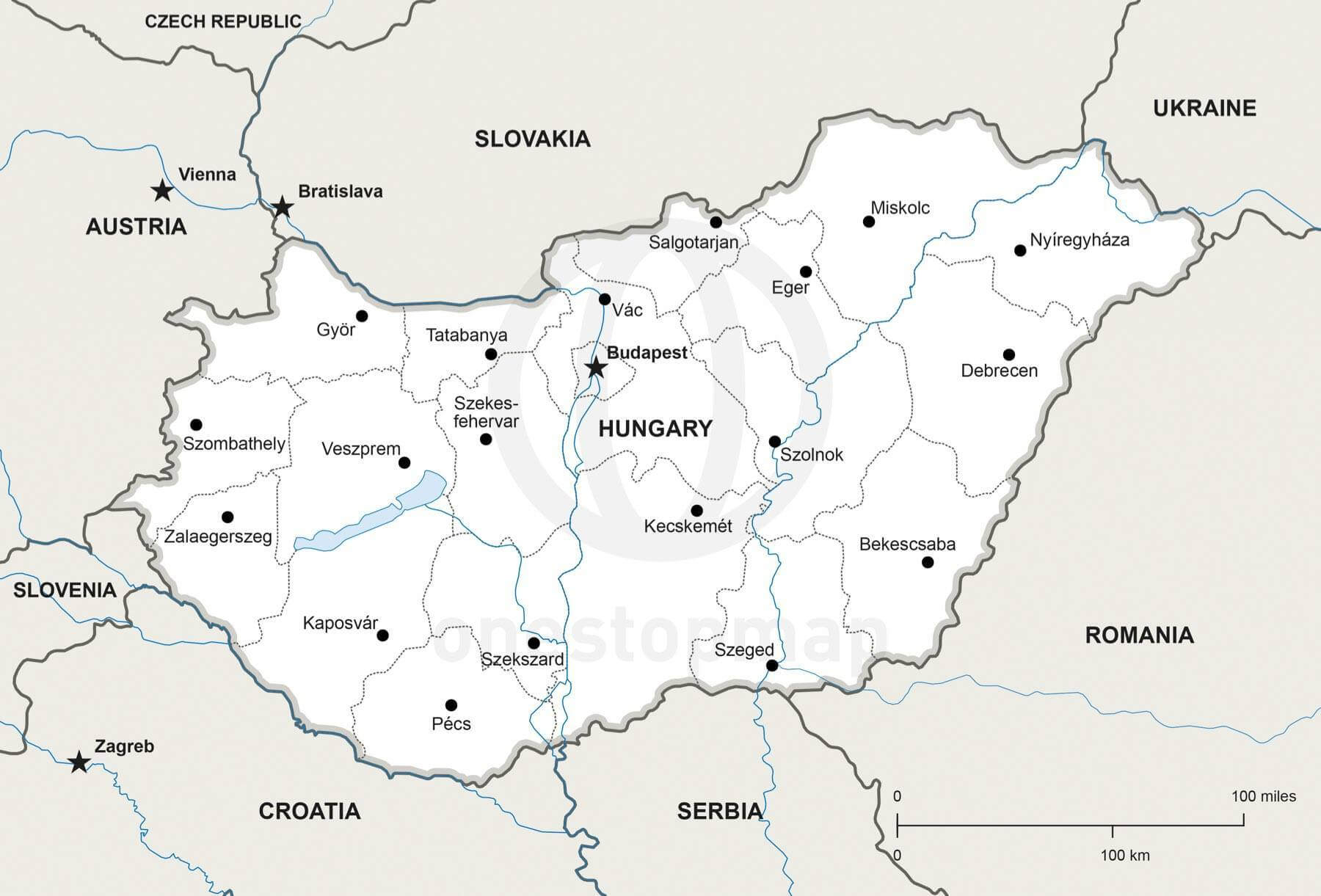
Hi Peter,
I really enjoyed looking at these wonderful images. After viewing them, I filed them in my Travel File under “Places I must Visit.”
It is remarkable that you were able to take all of these ‘hand-held’. Great work.